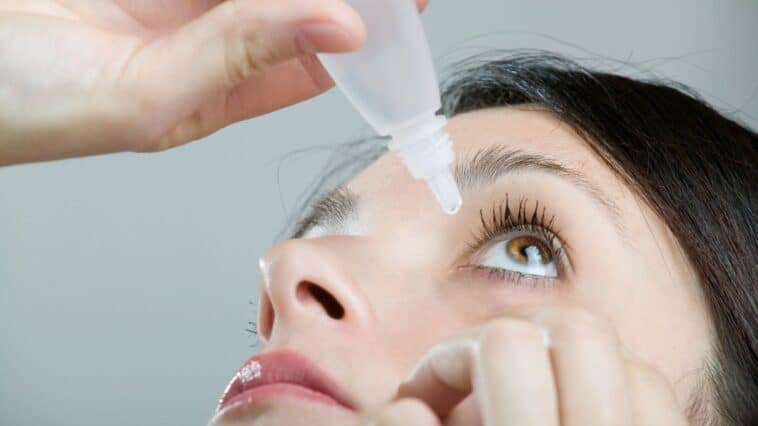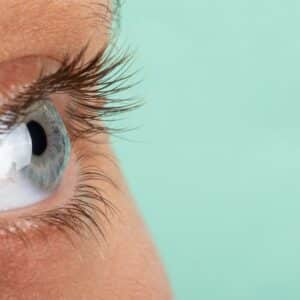Pink eye, or conjunctivitis, is a common eye infection that various factors, including viruses, bacteria, allergies, and irritants, can cause. While some cases of pink eye can resolve on their own, others require treatment with eye drops. However, with so many eye drops available on the market, choosing the right one for your specific condition can be overwhelming.
In this article, we will explore the different types of eye drops for pink eye and help you determine which one is right for you.
Different Types of Eye Drops for Pink Eye
Eye drops are a common treatment for pink eye and can help relieve symptoms such as redness, itching, and irritation. Different types of eye drops are available for pink eye, each of which is designed to address specific causes and symptoms.
Here are some of the different types of eye drops for pink eye and how they work:
- Artificial tears are over-the-counter eye drops that can help relieve the discomfort of pink eyes, such as itching, burning, and dryness. These drops benefit viral conjunctivitis, which cannot be cured with eye drops. Artificial tears can also be used to flush out irritants that may be causing conjunctivitis.
- Antibiotic eye drops: are typically prescribed by a doctor to treat bacterial conjunctivitis. These drops work by killing the bacteria responsible for the infection. It’s important to note that antibiotic eye drops should only be used under the supervision of an eye doctor, as overuse or misuse of antibiotics can lead to antibiotic resistance.
- Antihistamine eye drops can help alleviate the symptoms of allergic conjunctivitides, such as redness, itching, and tearing. These drops work by blocking histamine, a chemical the body produces in response to allergens. Some antihistamine eye drops may also contain a decongestant, which can help reduce eye redness.
- Steroid eye drops are often prescribed to treat severe cases of allergic conjunctivitis or inflammation caused by other factors. These drops work by reducing inflammation and swelling in the eye. However, steroid eye drops should only be used under the supervision of a healthcare provider, as long-term use can lead to serious side effects.
- Combination eye drops are a type of eye drop that contains multiple active ingredients, such as an antibiotic and a steroid. These drops are often used to treat severe bacterial or inflammatory conjunctivitis cases. However, like steroid eye drops, combination eye drops should only be used under the supervision of an eye specialist.
Prescription Eye Drops for Pink Eye
Prescription eye drops for pink eye are typically recommended for bacterial conjunctivitis, as they contain antibiotics that effectively fight the infection. Some common prescription eye drops for bacterial conjunctivitis include:
- Moxifloxacin (Vigamox): This antibiotic eye drop treats bacterial conjunctivitis caused by susceptible bacteria. It works by stopping the growth of bacteria, which helps to clear the infection.
- Ofloxacin (Ocuflox): This antibiotic eye drop treats conjunctivitis caused by susceptible bacteria. It works by stopping the growth of bacteria and reducing inflammation.
- Tobramycin (Tobrex): This antibiotic eye drop is used to treat eye bacterial infections, including conjunctivitis. It works by stopping the growth of bacteria and reducing inflammation.
- Gentamicin (Garamycin): This antibiotic eye drop treats bacterial conjunctivitis and other eye infections caused by susceptible bacteria. It works by stopping the growth of bacteria and reducing inflammation.
It is important to note that these prescription eye drops should only be used under the guidance and supervision of an eye specialist.
It is also essential to complete the entire course of treatment as prescribed, even if symptoms improve, to ensure the infection is fully treated and to prevent a recurrence.
Factors to Consider When Selecting Eye Drops for Pink Eye
When selecting eye drops for pink eye, there are several factors to consider, including:
- The cause of your conjunctivitis: Different types of eye drops are effective for different types of conjunctivitis. Identifying the underlying cause of your pink eye is essential before selecting an eye drop.
- Your age: Some eye drops may be unsafe for young or elderly patients. Always consult an eye doctor before giving eye drops to children or elderly patients.
- Other medical conditions: If you have other medical conditions, such as glaucoma or diabetes, some eye drops may not be safe to use. Before using eye drops, you must inform your healthcare provider of all your medical conditions and medications.
- Potential side effects: Like all medications, eye drops can cause side effects. Before using an eye drop, reading the label and understanding the potential side effects is vital.
Tips for Choosing the Best Eye Drops for Chronic Pink Eye
Recurrent or chronic pink eye can be a frustrating and uncomfortable experience. While eye drops can provide temporary relief, finding the right eye drops for long-term management is essential.
Here are some tips for choosing the best eye drops for recurrent or chronic pink eye:
- Consult with an eye doctor: If you have recurrent or chronic pink eye, it is essential to consult with an eye doctor to determine the underlying cause of your condition. Your eye doctor can recommend the best treatment options, including eye drops.
- Look for preservative-free eye drops: If you will be using eye drops for a long period, it is crucial to choose them. Preservatives in eye drops can irritate the eyes and cause additional discomfort.
- Consider longer-lasting eye drops: Some eye drops have longer-lasting effects than others. If you have recurrent or chronic pink eye, consider an eye drop with a longer-lasting effect so you don’t have to use them as frequently.
- Look for eye drops with anti-inflammatory properties: Chronic pink eye can often be associated with inflammation. Choosing an eye drop with anti-inflammatory properties can help reduce inflammation and provide relief.
- Discuss options for combination eye drops: Some eye drops combine multiple ingredients to provide a more comprehensive treatment approach. Talk to your eye doctor about options for combination eye drops that may suit your condition.
- Follow instructions for use: Always follow the instructions provided with your eye drops. This includes how often and how much to use them each time. Overuse of eye drops can cause irritation and may not provide relief.
- Keep your eye drops stored properly: Eye drops should be stored in a cool, dry place and not be used past their expiration date. Keeping your eye drops appropriately stored can help ensure their effectiveness and prevent additional eye irritation.
Following these tips, you can choose the best eye drops for your recurrent or chronic pink eye and manage your symptoms effectively. However, it is essential to consult with your eye doctor for proper diagnosis and treatment recommendations.
How to Use Eye Drops for Pink Eye?
Here are more details on how to use eye drops for pink eye:
- Wash your hands thoroughly: Before using any eye drops, it’s essential to wash your hands thoroughly with soap and warm water. This helps prevent the spread of infection.
- Tilt your head back: Tilt your head back and look up at the ceiling.
- Pull down your lower eyelid: Using your index finger, gently pull down your lower eyelid to create a small pocket.
- Apply the drops: Hold the eye dropper over the pocket and squeeze one drop into the pocket. Avoid touching the dropper to your eye or eyelashes to prevent contamination.
- Close your eyes: Close your eyes gently and tilt your head slightly to allow the drops to spread evenly over your eye.
- Repeat if necessary: If your doctor has instructed you to use more than one drop, wait at least 5 minutes between each application.
- Wash your hands again: Once you have used the eye drops, rewash your hands to prevent the spread of infection.
It’s important to use eye drops for pink eye as directed by your doctor or pharmacist. If you have any questions about how to use them, don’t hesitate to ask for clarification.
Pros and Cons of Using Eye Drops for Pink Eye
Using eye drops for pink eyes has advantages and disadvantages, and it is vital to consider them before deciding on a treatment plan.
Here are some pros and cons of using eye drops for pink eye:
Pros:
- Fast relief: Eye drops can relieve pink eye symptoms such as redness, itching, and burning.
- Convenient: Eye drops are easy to use and can be carried in a purse or pocket for quick and easy access.
- Effective: The right eye drops can effectively treat pink eye and reduce its symptoms.
- Availability: Many eye drops for pink eye are available over the counter, making them easy to obtain without a prescription.
Cons:
- Side effects: Some people may experience side effects from using eye drops, such as blurred vision, dryness, or stinging. It is essential to read the label carefully and follow instructions to avoid adverse reactions.
- Ineffectiveness: Some types of pink eye, such as viral conjunctivitis, may not be effectively treated with eye drops. In such cases, other treatments may be needed.
- Contamination risk: Eye drops can become contaminated if the dropper touches the eye or anything else, potentially causing a secondary infection.
- Cost: Prescription eye drops can be costly, especially if insurance does not cover them.
Overall, eye drops can be an effective and convenient treatment for pink eye, but it is essential to consider their pros and cons before use. It is also important to consult with a healthcare professional if symptoms persist or worsen.
What to Do if Pink Eye Persists?
If pink eye persists, seeing an eye doctor for a follow-up evaluation is essential. Depending on the type of conjunctivitis and the severity of the symptoms, your doctor may recommend different treatment options.
For bacterial conjunctivitis, your doctor may prescribe antibiotic eye drops or ointment. It is crucial to complete the full course of treatment as prescribed to prevent recurrence or antibiotic resistance.
For viral conjunctivitis, which cannot be cured with eye drops, the symptoms may take a few weeks to resolve. Your doctor may recommend supportive measures such as artificial tears to relieve dryness and irritation.
For allergic conjunctivitis, it is crucial to identify and avoid the allergen if possible, and your doctor may prescribe antihistamine eye drops, corticosteroids, or other medications to manage the symptoms.
Suppose an irritant or chemical exposure causes your pink eye. In that case, it is crucial to immediately flush the eye with clean water and seek medical attention if symptoms persist or worsen.
In some cases, pink eye may be a sign of an underlying health condition or infection, so it is vital to seek medical attention if symptoms persist or if you experience additional symptoms such as eye pain, sensitivity to light, blurred vision, or fever.
Conclusion
Various factors can cause pink eye, and it is essential to understand the type of conjunctivitis to determine the appropriate treatment.
While over-the-counter eye drops can relieve some types of pink eye, it is crucial to seek medical advice before using any medication. Prescription eye drops may be necessary for bacterial and severe viral and allergic conjunctivitis cases.
It is also essential to practice good hygiene, avoid touching the eyes and dispose of used eye drops safely to prevent infection. If pink eye symptoms persist or worsen, it is crucial to consult an eye doctor for further evaluation and treatment.






